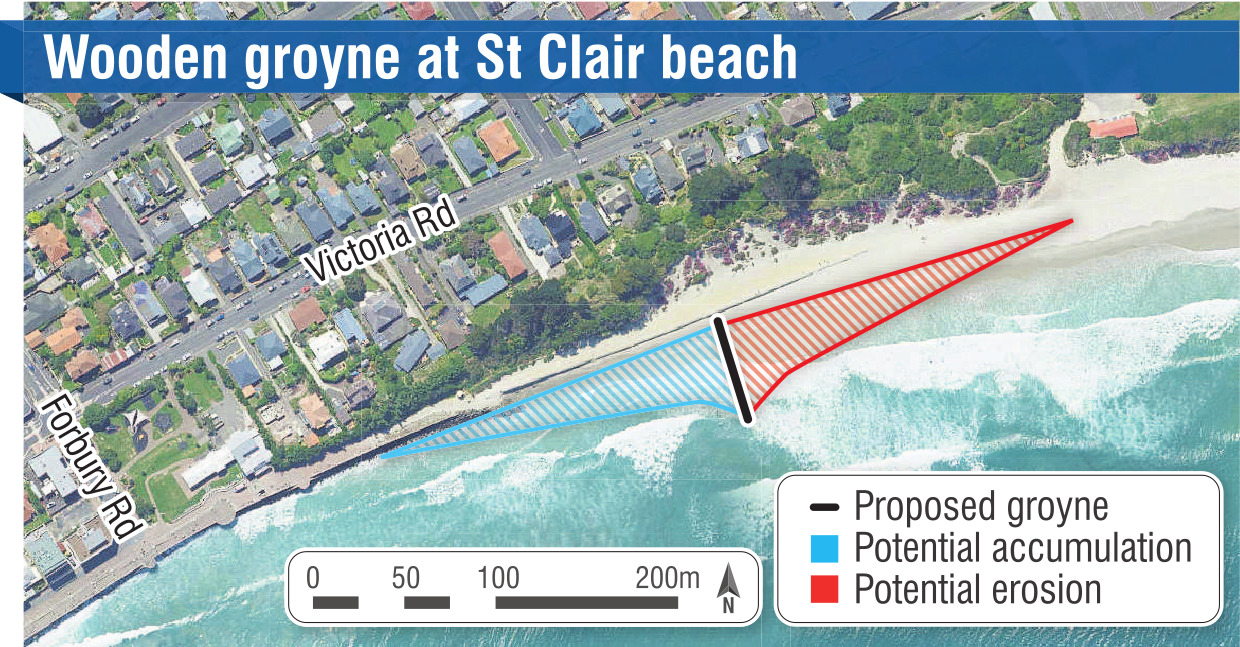
Unintended beach erosion, safety concerns and cost are some of the risks Dunedin City Council staff have identified in going ahead with any wooden groynes.
About nine much-photographed wooden poles at St Clair Beach are all that remain of a series of wooden groynes that were built in the early 20th century in an attempt to allay erosion.
Late last year, in a 12-2 vote, the council asked staff to assess the feasibility of reinstating the groyne structure, and how that would benefit the coast, including Kettle Park.

Cr Jules Radich advanced the motion - and in February he wrote in favour of the move in an opinion piece in the Otago Daily Times.
"Our famous St Clair poles are actually a sand-trap known as a groyne, and they are the main reason the beach became so wide and their deterioration is why we now have so much erosion," he said in his opinion piece.
"St Clair coastal erosion problems began 140 years ago as soon as the first seawall was constructed at the esplanade about 1880.
"The wall reflected the waves which then scoured away sand so that ever larger waves hit the wall with inevitable results."
In a report to be discussed at next week’s full council meeting, staff advise reinstating the groyne could improve beach access at the Esplanade and the end of Forbury Rd, but a groyne could also speed up erosion elsewhere and could be installed, requiring maintenance, without any extended benefit.
"Conceptually, if a typical groyne was to protect Kettle Park it would need to be roughly 395m long, rather than 65m as proposed (if located in the existing location)," council coastal specialist Tom Simons-Smith wrote.

"Roughly seven groynes would be required ... if built to the proposed specifications (e.g. timber groynes of 65m length), with the western-most groyne located in the proposed position (current poles)."
The reinstatement of the existing St Clair groyne would cost $150,000, and could cost up to $60,000 a year to maintain, he said.
Councillors will consider the matter on Tuesday.
The report recommends councillors stick with the status quo and consider groynes as part of the present work being done to develop a plan for managing the St Clair-St Kilda coastline.
The plan is expected to be finalised in 2021.
Starting today, the council is hosting a series of public drop-in sessions at the South Coast Board Riders Club on the Esplanade as part of that work.












